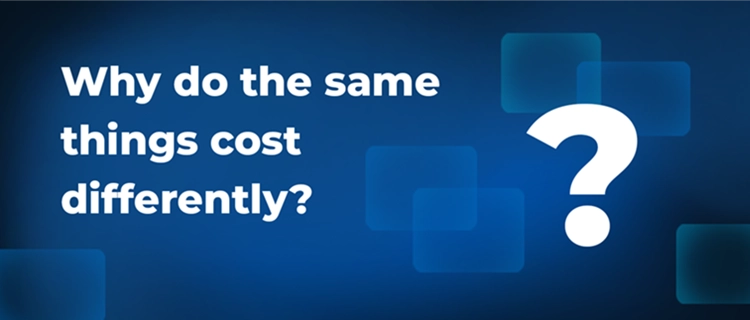
There’s no catch, just quality, value, and apprehension that value is not necessarily directly linked with the price. The cheaper service with bonuses may be less valuable than the more expensive yet well-thought-through eCommerce solution. The popular strategy of adding extras to things can sometimes harm rather than help.
Clients' opinions on eCommerce products or solutions prices matter. It may not depend on what you're selling or have anything to do with it.
With more than 17 years of experience in the IT service business, we understand why seemingly the same things cost differently, and we know why it is essential to explain a few things about it. Firstly, let’s talk about code effectiveness processes, technical aspects of various projects, tools, and just tasks. Albeit tasks come from the client and may look pretty straightforward, their implementation may be way more complicated. There are myriad ways to find a solution to a single problem. Finding the one that works may require going through loads that don’t. The earlier you stop the exercise, the higher chance that a solution will fail. In coding, less is always more, and experienced developers know it well. The poor value code is typically complex and superficial. Secondly, the crucial aspect is the complexity of the decision-making. It’s very subjective, yet the product’s high value relates to better user experience, efficient communication, strong relationships, and augmented transparency. Customers like to have a word on the team’s composition, which makes the process so much smoother yet adds to the cost a bit.
Clients’ opinions on products or solutions prices matter. It may not depend on what you’re selling or have anything to do with it. Two seemingly similar solutions may have some common characteristics yet appeal to different customers. The luxury limo may share some features with a sportscar yet may completely miss the requirements of a racing customer.
According to Rory Sutherland’s Ted Talk presentation, the cost is not only the price but also the meaning. The exact solutions or products can mean different things to different people, and there is no objective product value. However, influencing how people feel about the product or solution we offer helps optimize the customer experience and increase the expected customer return.
So, what’s the difference between price, cost, quality, and value? Perceived value is what’s received and what’s given. It holds the understanding of the product itself, quality included. It also contains actual product attributes, like convenience, perceptions of security, service, and more.
Grading things as expensive or cheap is a tendency of people’s minds. Grading what’s valuable and what’s not – is comprehensible through a thorough examination of the user case and experience in the market. Being capable and willing to deliver value rather than simply drive sales, we go to great lengths to find out what brings value to the specific customer and what’s relevant in the particular market situation. It is quite often the case that the value proposition is clarified well beyond the starting point of the discussion and may change substantially over the course of the implementation. There are numerous ways to ensure customer value remains in the spotlight over the course of the project. Constant uptime of the team to make a U-turn at any point if the situation requires, included. Yet that may be exactly what is needed to deliver up to constantly evolving expectations. The fixed price may serve virtue yet may equally become a burden for the growing business.
A common practice of businesses that primarily compete with low prices is adding free benefits to the low-value proposition to increase its competitive edge. However, it may not serve up to its purpose, as most often, the benefits are not usable or come at the expense of putting them to work, which eventually requires distracting the resources from the primary goal. On the other hand, research by Alexander Chernev discusses that bundling an expensive product with a cheaper one drives people to categorize the bundle as that of a lower value, lowering their willingness to pay for it at all. Putting things together that cost differently in one offer does not devalue expensive products but does not necessarily sell them. Yet it almost certainly adds to already complicated decision-making, driving people to reason whether the bundle services or products are worth paying at all.
The exclusive value is one of the essential elements determining the value of the service to the client. It consists of many elements, such as perceived (conscious) and unperceived (unconscious) forces or critical factors. They are significantly crucial in creating and sustaining exclusivity. Negligently embarrassing the client or displaying disrespect for their beliefs may “kill” the sale and eliminate any possibility of future relations. Failing to recognize and manage critical factors can result in high levels of risk concerning the customer-company relationship, pricing, service delivery, and customer satisfaction. Satisfying our customers’ needs, we need to take time and resources to address everything mentioned above. The lowest value propositions do not have this included. We bet you know that, don’t you?